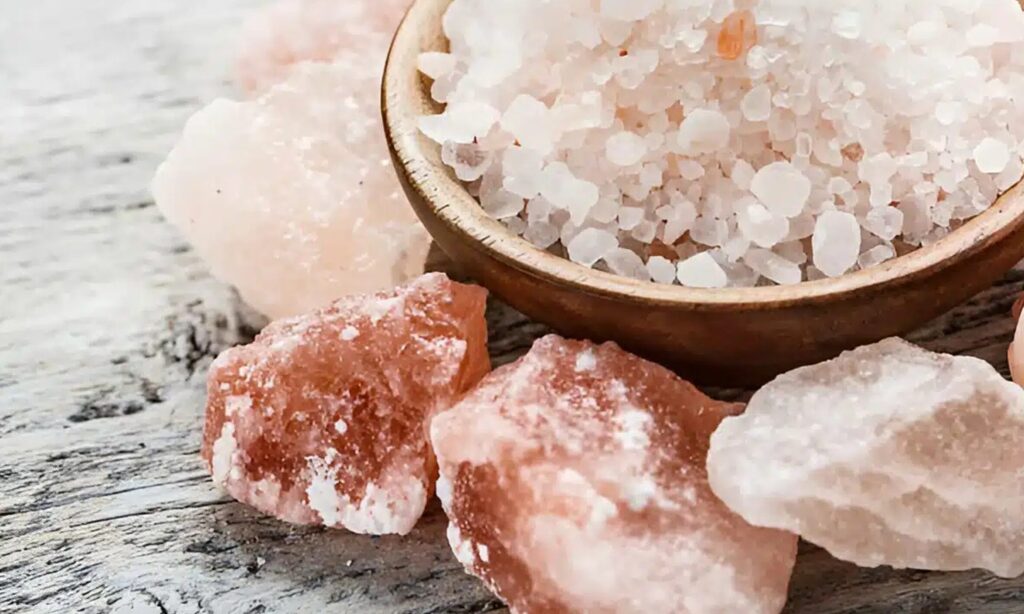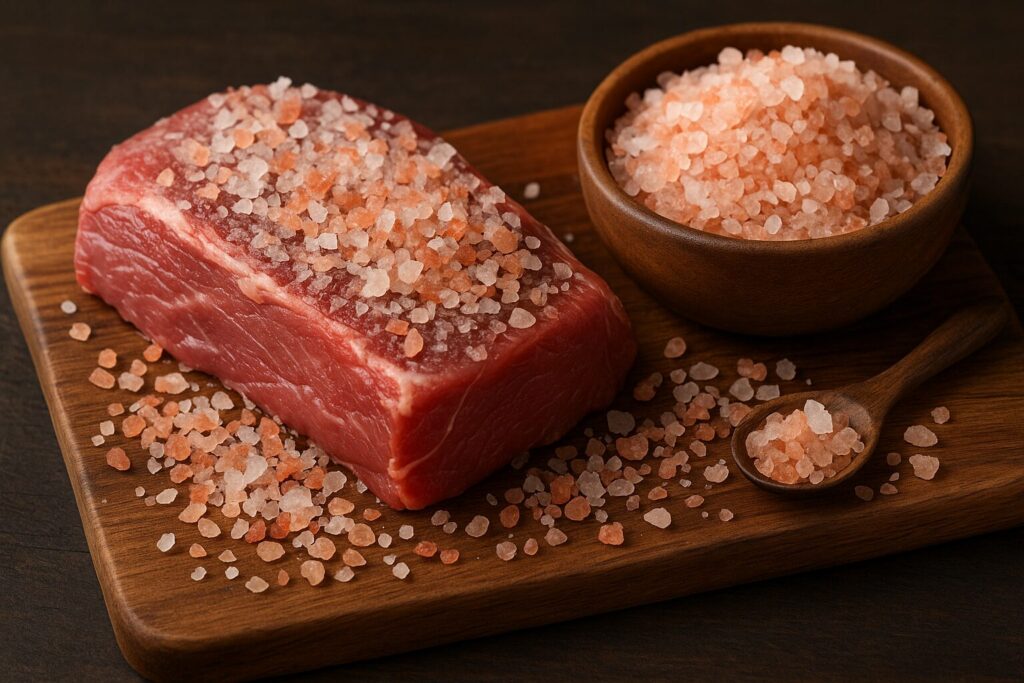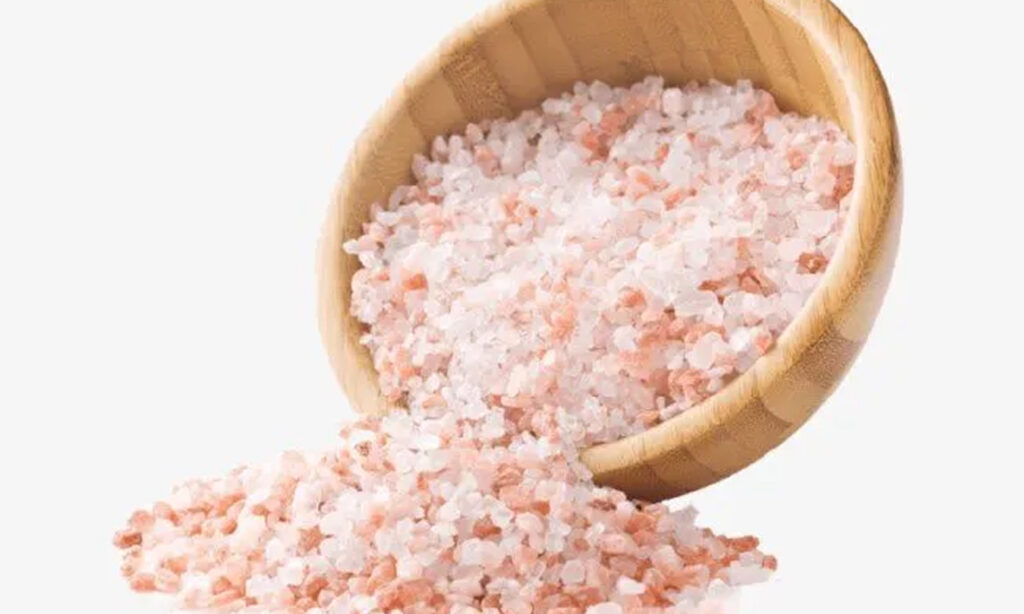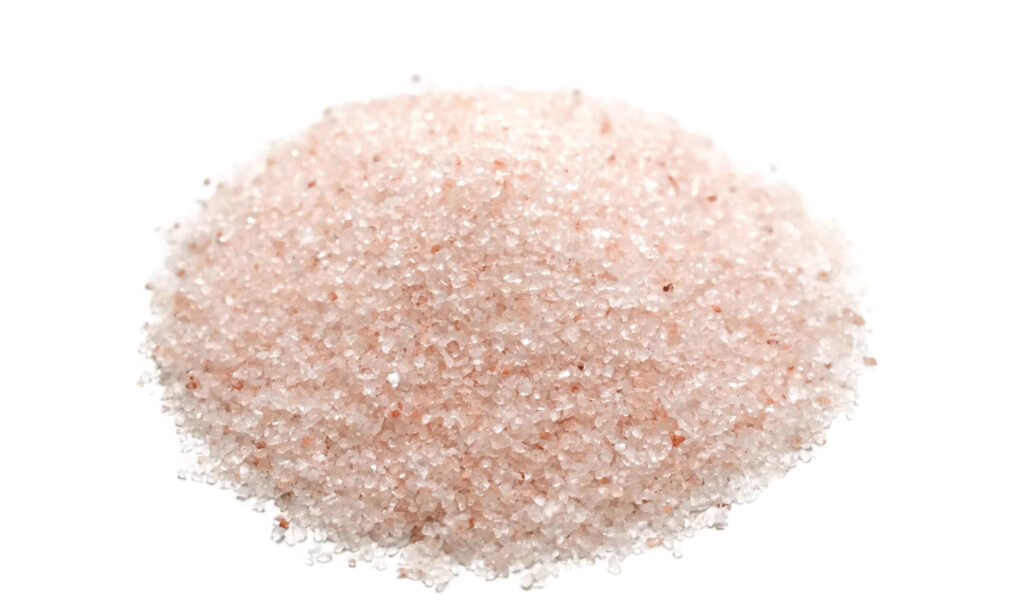Kosher Salt vs Himalayan Salt Which is Better for You?
Salt isn’t just salt there’s more than meets the eye when it comes to that crystalline seasoning you shake onto your food. From kitchens to wellness routines, the battle of kosher salt vs Himalayan salt is heating up. But which one deserves a spot on your shelf?
Whether you’re a foodie, a health-conscious consumer, or just curious about that pink rock salt on your table, understanding the difference between kosher salt and Himalayan salt can elevate both your cooking and lifestyle.
Let’s dive into the details, and explore the origins, taste, texture, mineral content, and everyday uses of Himalayan salt vs kosher salt.
1. Origin and Processing
Kosher Salt
Kosher salt gets its name not from religious origins but because it’s commonly used in the koshering process drawing blood from meat. It’s typically mined from salt deposits in the United States, especially from salt mines in Utah.
It undergoes minimal processing and doesn’t contain additives like iodine. Its flat, flaky crystals make it easy to pinch and spread, which is why chefs love it.
Himalayan Salt
Himalayan salt, often referred to as pink salt, is harvested from the Khewra Salt Mine in Pakistan the second largest salt mine in the world. It’s believed to be over 250 million years old.
This salt is minimally processed and hand-extracted, preserving its unique minerals, including calcium, magnesium, potassium, and iron which gives it that distinctive pink hue.
2. Color, Texture, and Taste
Pink Salt vs Kosher Salt – Appearance
- Kosher salt is white, flaky, and large-grained.
- Himalayan salt has a pinkish-orange color due to trace minerals.
The visual difference is striking making pink salt vs kosher salt a matter of preference in both aesthetic and application.
Taste Test
- Kosher salt offers a clean, pure saltiness that doesn’t overpower.
- Himalayan salt has a slightly more complex flavor profile, thanks to its unique minerals, though the difference is subtle to most palates.
In blind taste tests, most people report Himalayan salt to have a “richer” or more “rounded” flavor, especially in raw uses like seasoning finished dishes or salads.
3. Culinary Uses
Kosher Salt in the Kitchen
Chefs prefer kosher salt for cooking because:
- Its flaky texture sticks to food
- It dissolves quickly
- It gives better control during seasoning
It’s ideal for salting pasta water, brining meat, and baking recipes that call for a precise salt measure.
Himalayan Salt’s Culinary Role
Himalayan salt is often used:
- As a finishing salt
- In salt grinders
- On salt blocks for grilling or serving
Its coarser crystals can be used for a visual and flavorful flourish on steak, chocolate, or roasted veggies.
4. Health and Nutritional Comparison
Let’s tackle the question behind most searches about kosher salt vs pink salt which is healthier?
Nutrient Content
- Kosher salt: Mostly pure sodium chloride, with minimal mineral content.
- Himalayan salt: Contains over 80 trace minerals such as calcium, magnesium, and iron.
However, the actual mineral benefit is minimal because the quantity of salt consumed is small. While Himalayan salt is praised for its unique minerals, it’s not a significant source of nutrition.
Sodium Levels
- Both types contain nearly the same amount of sodium by weight.
- Kosher salt has larger crystals, meaning less sodium per teaspoon compared to finer salts.
- Himalayan salt’s smaller crystals mean you could end up consuming more sodium without realizing it.
Bottom line: Use either in moderation.
5. Wellness and Alternative Uses
Himalayan Salt
This salt is popular in wellness circles. It’s used for:
- Salt lamps (claimed to purify air)
- Bath soaks (for relaxation)
- Nasal rinses (in saline solutions)
While scientific evidence is limited, many users believe Himalayan salt’s unique minerals promote better skin and respiratory health.
Kosher Salt
Kosher salt doesn’t have alternative health uses beyond culinary. Its value lies in its cooking performance rather than wellness trends.
6. Environmental and Ethical Considerations
- Kosher salt, mostly mined in the U.S., has a lower transportation footprint.
- Himalayan salt is imported from Pakistan, contributing to a larger carbon footprint. However, it’s often harvested using manual methods that are environmentally friendly.
Ethical sourcing, mining impact, and packaging can vary so look for brands committed to sustainability if this is a concern.
7. Which One Should You Choose?
Choose Kosher Salt if:
- You need an everyday cooking salt
- You like easy control while seasoning
- You’re following traditional recipes
Choose Himalayan Salt if:
- You enjoy unique visual and flavor appeal
- You’re interested in alternative health uses
- You want to add some unique minerals to your wellness rituals
Ultimately, the difference between kosher salt and Himalayan salt isn’t about which one is “better” it’s about which suits your needs.
8. Quick Comparison Table
| Feature | Kosher Salt | Himalayan Salt (Pink Salt) |
|---|---|---|
| Color | White | Pink |
| Texture | Flaky | Coarse |
| Sodium Content | Lower per tsp (due to size) | Slightly higher per tsp |
| Minerals | Minimal | Rich in unique minerals |
| Culinary Use | General cooking, brining | Finishing, gourmet presentation |
| Non-Culinary Use | None | Wellness, bath, décor |
| Taste | Pure, clean | Slightly richer, mineral-y |
Which Salt Deserves a Spot on Your Shelf?
Both kosher salt and Himalayan salt offer unique advantages. Whether you’re after precision in the kitchen or a dash of luxury on your plate, the choice is yours.
Understanding the difference between kosher salt and Himalayan salt helps you season your meals with intention and maybe even a little bit of mineral magic.
FAQs: Kosher Salt vs Himalayan Salt
What is the difference between kosher salt and Himalayan salt?
Kosher salt is flakier and mainly used in cooking, while Himalayan salt is pink and rich in trace minerals, often used for both cooking and wellness.
Is Himalayan salt healthier than kosher salt?
While Himalayan salt contains more unique minerals, the health benefits are minor due to small consumption quantities.
Can I substitute kosher salt with Himalayan salt in recipes?
Yes, but adjust for grain size. Himalayan salt’s smaller crystals mean you might use less for the same saltiness.
Why is Himalayan salt pink?
The pink color comes from trace unique minerals like iron, magnesium, and potassium found naturally in the salt.
Which salt is best for everyday cooking?
Kosher salt is the top choice for everyday cooking because of its texture and flavor control, though Himalayan salt can be used too.









